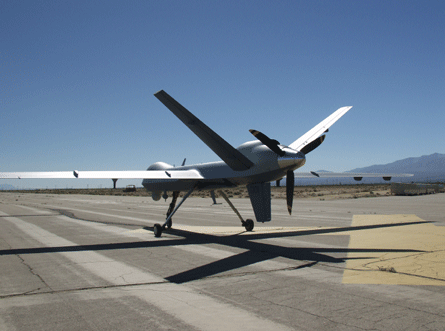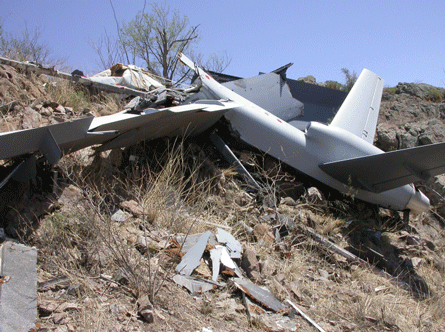The US National Transportation Safety Board (NTSB) has issued almost two dozen safety recommendations to the FAA and the Customs and Border Protection (CBP) agency dealing with how unmanned aerial vehicles (UAVs) should be operated when flying in US airspace.
The hearing and the recommendations are the first foray by the Board into UAV-related safety issues.
The probable cause and recommendations stem from an 25 April, 2006 night-time crash of a Predator B single-engine turboprop operated by the CBP for medium-altitude surveillance work in the southwest US.

Approval to fly UAVs in civil airspace is granted by the FAA through a one-year Certificate of Operations (COA) that defines the airspace where the vehicle will fly as well as limitations in some cases. The agency issued 110 COAs in 2006, and has approved 55 so far this year.

After having its engine mistakenly shutdown by its remotely-based pilot, the UAV descended into the terrain in a sparsely populated area near Nogales, Arizona, causing major damage to the 66-ft (20m) wingspan aircraft but no injuries on the ground. The nearest house was within 300ft of the aircraft, according to the NTSB.

A key finding from the investigation from a National Airspace Systems (NAS) perspective is that air traffic controllers responsible for providing separation between the UAV and civil traffic were not aware of the Predator's exact location during a several hour period during which the aircraft attempted to fly to a “lost-link” mission profile, a series of manoeuvres that put the aircraft in a known, safe holding pattern until communications links can be re-established.
The NTSB determined that the probable cause of the action to be the pilot’s failure to use a checklist when trying to re-establish control of the Predator on a backup control station after the primary station experienced a “lock up”, a problem that had occurred 16 times during the four months before the crash.
Differences in the initial configuration of the backup station caused the fuel flow to the aircraft’s single turboprop engine to be shutoff when pilot activated the secondary console. Without engine power, the aircraft’s transponder became inoperative, making the aircraft invisible to collision avoidance systems on other aircraft and air traffic control’s secondary surveillance radar.
Recommendations to the FAA include requiring transponders to remain operational “at all times” by a power source; recording all conversations among UAV operators and air traffic control for use in incident and accident investigations, and requiring face-to-face periodic reviews between UAV operations teams and local air traffic controllers to discuss responsibilities during normal and contingency operations.
Source: FlightGlobal.com



















